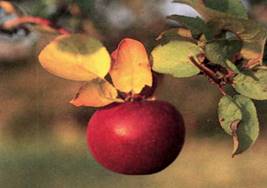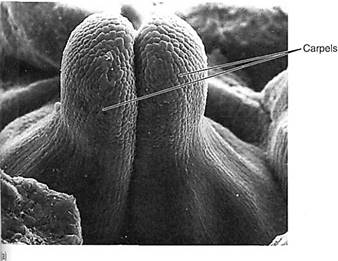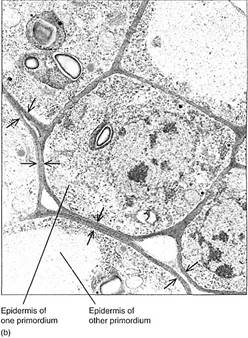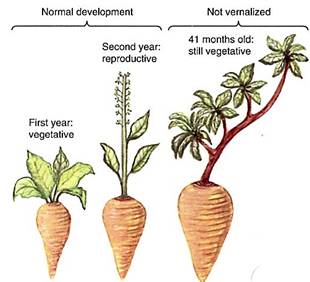

النبات

مواضيع عامة في علم النبات

الجذور - السيقان - الأوراق

النباتات الوعائية واللاوعائية

البذور (مغطاة البذور - عاريات البذور)

الطحالب

النباتات الطبية


الحيوان

مواضيع عامة في علم الحيوان

علم التشريح

التنوع الإحيائي

البايلوجيا الخلوية


الأحياء المجهرية

البكتيريا

الفطريات

الطفيليات

الفايروسات


علم الأمراض

الاورام

الامراض الوراثية

الامراض المناعية

الامراض المدارية

اضطرابات الدورة الدموية

مواضيع عامة في علم الامراض

الحشرات


التقانة الإحيائية

مواضيع عامة في التقانة الإحيائية


التقنية الحيوية المكروبية

التقنية الحيوية والميكروبات

الفعاليات الحيوية

وراثة الاحياء المجهرية

تصنيف الاحياء المجهرية

الاحياء المجهرية في الطبيعة

أيض الاجهاد

التقنية الحيوية والبيئة

التقنية الحيوية والطب

التقنية الحيوية والزراعة

التقنية الحيوية والصناعة

التقنية الحيوية والطاقة

البحار والطحالب الصغيرة

عزل البروتين

هندسة الجينات


التقنية الحياتية النانوية

مفاهيم التقنية الحيوية النانوية

التراكيب النانوية والمجاهر المستخدمة في رؤيتها

تصنيع وتخليق المواد النانوية

تطبيقات التقنية النانوية والحيوية النانوية

الرقائق والمتحسسات الحيوية

المصفوفات المجهرية وحاسوب الدنا

اللقاحات

البيئة والتلوث


علم الأجنة

اعضاء التكاثر وتشكل الاعراس

الاخصاب

التشطر

العصيبة وتشكل الجسيدات

تشكل اللواحق الجنينية

تكون المعيدة وظهور الطبقات الجنينية

مقدمة لعلم الاجنة


الأحياء الجزيئي

مواضيع عامة في الاحياء الجزيئي


علم وظائف الأعضاء


الغدد

مواضيع عامة في الغدد

الغدد الصم و هرموناتها

الجسم تحت السريري

الغدة النخامية

الغدة الكظرية

الغدة التناسلية

الغدة الدرقية والجار الدرقية

الغدة البنكرياسية

الغدة الصنوبرية

مواضيع عامة في علم وظائف الاعضاء

الخلية الحيوانية

الجهاز العصبي

أعضاء الحس

الجهاز العضلي

السوائل الجسمية

الجهاز الدوري والليمف

الجهاز التنفسي

الجهاز الهضمي

الجهاز البولي


المضادات الميكروبية

مواضيع عامة في المضادات الميكروبية

مضادات البكتيريا

مضادات الفطريات

مضادات الطفيليات

مضادات الفايروسات

علم الخلية

الوراثة

الأحياء العامة

المناعة

التحليلات المرضية

الكيمياء الحيوية

مواضيع متنوعة أخرى

الانزيمات
Sensing Environmental Stimuli
المؤلف:
AN INTRODUCTION TO PLANT BIOLOGY-1998
المصدر:
JAMES D. MAUSETH
الجزء والصفحة:
30-10-2016
2749
Sensing Environmental Stimuli
Numerous factors in the environment affect plant growth, development, and morphogenesis, but probably only a few are sensed by plants and initiate a response. It is important to think about this carefully: Most factors in the environment that impinge directly on a plant affect its growth but do not initiate a specific adaptive response. For most perennial plants, cool temperatures in autumn initiate responses that prepare the plant for cold, stressful winter conditions. This response is adaptive, increasing the plant's chances of survival. But cool temperatures in midsummer do not cause this response; instead, the plant merely grows more slowly, as would be expected for any enzyme-mediated process. This response can be predicted easily from ordinary chemical/physical considerations and probably is not adaptive; no new or specialized response is initiated. Mineral deficiency may result in severe stress symptoms such as chlorosis or necrosis, but these are unavoidable disease symptoms, not adaptive responses—they do not increase the plant's ability to find the deficient element or conserve what it already has. In contrast, when the root of a legume perceives the presence of nitrogen-fixing Rhizobium bacteria, the root begins an entirely new type of development, initiating root nodules. This is an adaptive response, many aspects of which cannot be accounted for simply; it probably involves activation of certain specific genes.
Among the environmental factors that are perceived and transduced and initiate adaptive responses are the following.
LIGHT
Besides energy for photosynthesis, light also provides two important types of information about the environment: (1) the direction or, more precisely, the gradient of light. It is advantageous for a plant to be able to grow or to orient its leaves toward a region of bright light in order to gather the most light available for photosynthesis. (2) The duration of light or, more specifically, the length of the day, provides information about time of year. Air temperature is unsuitable because cool autumn temperatures may be followed so quickly by severe cold that plants do not have enough time to become dormant. But day length is an infallible indicator of season.
GRAVITY
It is selectively advantageous for many plants to orient themselves or their parts with respect to the direction of gravity. In some cases, gravity itself is important as a cause of weight stress. Whenever a plant is bent or tilted because of flooding or the slipping of a hillside, the plant must change its growth back to an upright direction. In some situations, the direction of gravity is a guide to other important factors. Roots that grow downward are more likely to encounter water and minerals. Shoots that grow upward grow above other plants and encounter better conditions for photosynthesis, pollination, and seed distribution. Normally shoots do this by growing toward the brightest light, the open sk), but shoots of seeds that germinate deep in the soil must determine which way is up while in the dark. Direction of gravity is their only reliable guide. Most bilaterally symmetrical flowers must be aligned with the body symmetry and flight pattern of their pollinator. Such flowers must be oriented vertically because bees and moths do not fly upside down or sideways. The flower must orient itself along the same environmental gradient that the pollinator uses—the gravitational gradient of up versus down.
Although gravity does not change with time, the amount of force it exerts on a particular organ does change as the weight supported by the organ changes. The pedicel of an apple flower supports almost no weight, but the same pedicel must later support the weight of a fully grown fruit (Fig.1). The extra fibers are not produced until needed. Similarly, a young branch must be strong enough to support a small amount of weight, whereas a larger branch must support more.

FIGURE1 : Weight is a source of information to the plant about the amount of collenchyma or sclerenchyma needed to counteract the gravitational attraction on the plant. Initially, the flower stalk was strong enough only to support the weight of a flower; by sensing and responding to gravity, it is now strong enough to support the weight of an apple.
TOUCH
Although plants do not move around like animals, their parts frequently grow against objects and respond to this contact. Certain types of contact are detrimental, for example, when a root grows against a stone or a branch rubs against another branch. In these cases, a thick bark is adaptive as a protective layer. Other types of contact are beneficial: After a tendril touches an object, it grows around the object and uses it as a support. When a fly touches sensitive trigger hairs on a Venus' flytrap, the trap closes, catching and holding the insect for digestion. In some cases, the contact is between two growing primordia and is a normal developmental feature. Many flowers that have fused petals or carpels start with separate primordia that grow together and fuse, acting as a single unit during development (Fig. 2). In each case, the physical action of touching is similar, but each organ responds in a distinct way that is adaptive for the plant, and the response of each would be inappropriate if it occurred in the others.


FIGURE 2: (a) The carpels of Catharanthus roseus are initiated separately and consist of protoderm and ground meristem. But they soon crowd into each other and fuse into one syncarpelous gynoecium (X 70). (b) At the points of contact, the protoderm changes into mesophyll rather than epidermis (X 6000). (Courtesy of Judith A. Verbeke, University of Arizona)
TEMPERATURE
Temperature fluctuates in a predictable pattern on both a daily and a yearly basis. Changing temperatures can signal many specific types of plant development. Cold temperatures are required for the normal flowering of biennial and many perennial plants. This effect, called vernalization, causes the plant to switch to a state in which it is capable of sensing and responding to a subsequent stimulus that induces flower formation (Fig. 3). Other species, such as apples, require very cold temperatures to break the dormancy of flower buds formed in the previous summer; if grown in areas with warm winters, they do not bloom. Although most plants appear to be quiescent and virtually lifeless in winter, a considerable amount of critically important metabolism is occurring. This metabolism usually does not proceed at temperatures above 1 to 7°C.
Low temperatures are required to induce the deep dormancy of temperate trees and shrubs. Short days induce plants to prepare for winter, but the most resistant stages of dormancy are not entered until the plant actually experiences cool temperatures.

FIGURE 3 : If a beet is protected from cold temperatures, it remains in a juvenile condition and is never able to flower. Cold is the stimulus that induces biennial plants to become competent to respond to a later floral stimulus. If such a plant is exposed to flower-inducing conditions, but without vernalization, it never flowers. We do not know whether the incompetence is an inability to perceive, transduce, or respond.
WATER
Although water is an absolute prerequisite for all forms of life, its presence probably does not act like a signal in the way that other factors do. If enough water is available, plants grow; if not, plants wilt and perhaps even die. Although roots often appear to grow toward water, they actually grow in all directions, and those which, by chance, grow toward water grow more rapidly because they are in a favorable environment. Roots that grow away from water grow slowly, but only because they enter an environment too dry to permit growth. Roots do not turn and grow toward water in the way that they turn and grow toward gravity.
The beginning of water scarcity triggers specific adaptive responses. One of the first is the production of the hormone abscisic acid, which causes guard cells to lose potassium and close stomatal pores. This mechanism is adaptive and occurs in most plants even while cells have enough water to carry on basic metabolism. If water stress continues or becomes more severe, new responses are triggered that may inhibit the production of new leaves, increase the cuticle on existing leaves, or even initiate the abscission of leaves.
 الاكثر قراءة في مواضيع عامة في علم النبات
الاكثر قراءة في مواضيع عامة في علم النبات
 اخر الاخبار
اخر الاخبار
اخبار العتبة العباسية المقدسة

الآخبار الصحية















 قسم الشؤون الفكرية يصدر كتاباً يوثق تاريخ السدانة في العتبة العباسية المقدسة
قسم الشؤون الفكرية يصدر كتاباً يوثق تاريخ السدانة في العتبة العباسية المقدسة "المهمة".. إصدار قصصي يوثّق القصص الفائزة في مسابقة فتوى الدفاع المقدسة للقصة القصيرة
"المهمة".. إصدار قصصي يوثّق القصص الفائزة في مسابقة فتوى الدفاع المقدسة للقصة القصيرة (نوافذ).. إصدار أدبي يوثق القصص الفائزة في مسابقة الإمام العسكري (عليه السلام)
(نوافذ).. إصدار أدبي يوثق القصص الفائزة في مسابقة الإمام العسكري (عليه السلام)


















